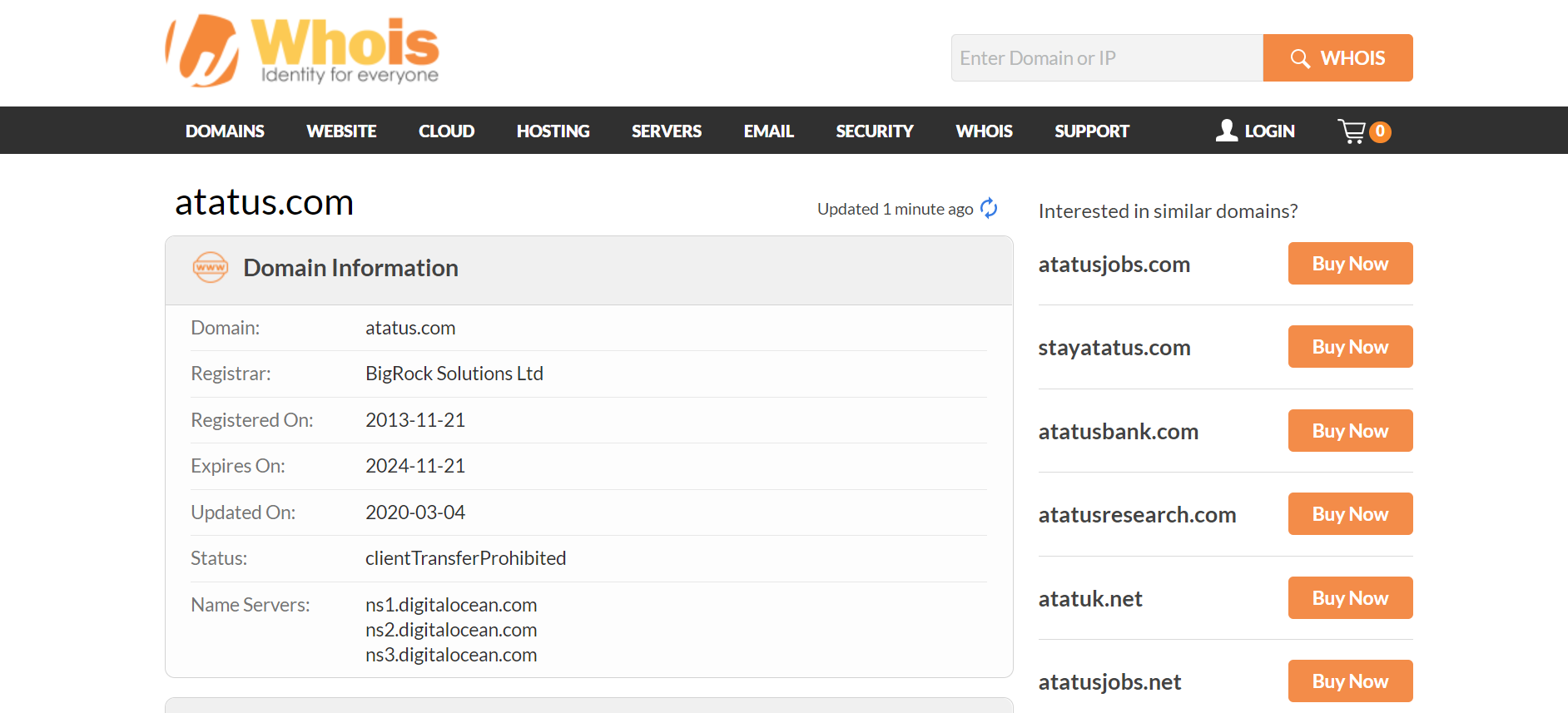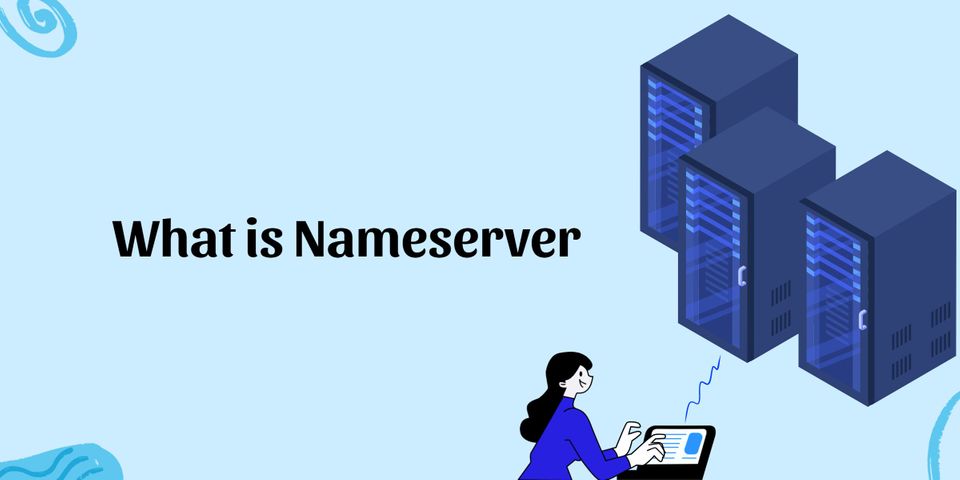Nameserver: What is It? How Does It Work? Why It is Important to Your Website?
You may have come across the word "nameserver" if you maintain your own website. You may, however, have no true idea of what one is or how it works. Knowing a little about the “nameserver” concept can help you manage your website.
Simply said, nameservers help browsers in establishing links between URLs and websites. They're essential since we'd have to memorize IP addresses to visit websites if we didn't have them. You'll be able to set up a new nameserver if the need arises once you've grasped the fundamentals of nameservers.
In this article, we are going to put simply the following:
- What is a Nameserver?
- How Does Nameserver Work?
- DNS Records vs. Nameserver
- How to Access Your Website’s Nameserver?
- How to Setup a Nameserver for Your Domain?
- What Are the Benefits of Having Your Own Nameserver?
- Why Nameservers are Important for Your Website?
What is a Nameserver?
A nameserver is a server that converts domain names into IP addresses. It answers client queries regarding the location of a domain name and associated services on DNS servers, such as from a computer or tablet. Any server with DNS software installed is referred to as a nameserver. However, the phrase is most usually used to refer to a hosting provider's web server, which handles and maintains their customers' domain names.
Every time someone visits a website, nameservers are activated, yet many people are unaware of its purpose. You simply type in a URL, and the nameserver informs your browser of the website's location, allowing the desired page to load.
The information is used by nameservers to translate domain names into numerical IP addresses, which our computers can understand. This procedure is practically invisible since it happens so quickly.
We'd have to type long IP addresses into our browsers every time we wanted to visit a website if we didn't have this method. As a result, the service given by nameservers is priceless.
Domain names only need one nameserver, referred to as the primary DNS. However, if your domain goes down for whatever reason, it will have a big impact on your website. That is why domains are associated with two nameservers. To prevent domains from falling offline, having two nameservers is considered a typical backup need.
Nameservers have the same appearance as any other domain name. You'll usually find at least two nameservers when looking at a website's nameservers but you can use more. Here's an example of how they appear:
DigitalOcean NameServers
- ns1.digitalocean.com
- ns2.digitalocean.com
- ns3.digitalocean.com
Cloudflare NameServers
- zita.ns.cloudflare.com
- anirban.ns.cloudflare.com
How Does Nameserver Work?
In simple terms, nameservers arrange and route traffic across the internet. When you type a website address into your browser's address bar and press Enter, your browser begins the process of decoding the site and sending your traffic to the appropriate web server. The name server is in the midst of everything, storing all of the information about which websites are hosted where.
The domain name is the website address you type in which is difficult for a computer to understand. The IP address, which is a string of digits with greater precision, is much easier to understand. Nameservers convert a domain name into an IP address, bridging the gap between the information that people can understand and information that computers can understand.
The procedure can be compared to a map. For most individuals, a city or street address is sufficient, but an experienced cartographer is more concerned with coordinates. Most people find it easier to type in “atatus.com” when browsing, but a computer is more interested in the IP address of the webserver you want to visit.
The nameserver can then route your request to the server that has the website you're looking for after translating the domain name into an IP address. This is a nearly instantaneous procedure. Your browser can ping the name server, receive a response, and lead you to the website you want in a matter of seconds, despite the fact that it requires numerous steps.
DNS Records vs. Nameserver
DNS records and name servers work together, but they are not the same thing:
- DNS records keep track of which IP addresses correspond to which domains. It is the catalog.
- The name server is a library
DNS records are similar to entries in a phone book for DNS. On your website, different DNS records serve distinct purposes.
Some of the most common DNS records are as follows:
- A Records – An IPv4 address is used to point to a domain or a subdomain. This is the rule that points a domain such as test.com to the web server that hosts the test.com website.
- CNAME Records – This is used to link a subdomain to the primary or canonical domain. This rule is frequently used to link a www subdomain to the primary domain.
- MX Records – It's used to link a domain to email service. If you want mail from test.com to be delivered to a specific email service, you'll use this type of rule.
- TXT Records – Any arbitrary text can be associated with a domain using this method. TXT records are most typically used to associate SPF records with a domain in order to improve email deliverability and prevent spammers from misusing the domain name while sending spam.
Nameservers, on the other hand, help in the storage and organization of each unique DNS record. Those are servers that are similar to web servers. However, instead of serving up websites or web applications, they are set up to store DNS records. This implies that any DNS records you intend to alter must be done on the nameservers indicated by the registrant or a third-party service.
Let's take a closer look at what happens when you visit a website now that you know what to expect:
- You type "atatus.com" into the address field and press the Enter key
- The nameservers for the domain are retrieved using DNS by your browser
- Your browser requests the A record, which contains the web server's IP address - a specific DNS record
- The IP address from the A record is provided by the nameservers
- The content of the website is requested by your browser from that IP address
- The content is retrieved and rendered in your browser by your browser
Each web server has a different procedure for changing DNS records. However, most major domain registrars and web hosting companies include information to help you navigate the procedure. Copying and pasting the nameserver address into the appropriate area is generally all that is required.
How to Access Your Website’s Nameserver?
By Using Whois
Using a publicly accessible Whois website, you can easily verify your nameservers. Simply fill in your domain name and you'll be sent to a page with information on your domain's registration, registration status, and nameservers for your website.

Using Your Own Computer
Alternatively, you can use your own computer to execute a basic test.
1. You can test your nameservers on Windows by performing the following steps:
- Search for PowerShell in the start bar and launch the program
- In the PowerShell interface, type "nslookup"
- Type "set q=NS" and press Enter button
- Enter your domain name and then press Enter again
2. You can test your nameservers on Mac by typing the following command:
host -t NS domain.comor
dig domain.comThe "dig" command will return the nameservers, as well as a boatload of other details.
Where Are Your Domain’s Nameservers Located?
When you register a domain name with a domain registrar, your domain is typically pointed to the nameservers of the domain registrar at first. Your domain registrar is also where you may change the nameservers for your domain.
You could leave your nameservers with your domain registrar and simply modify the DNS records to link your domain name to your web hosting if you wanted to. Many web providers, however, recommend that you change your domain's nameservers to the host's nameservers.
How to Setup a Nameserver for Your Domain?
Setting up one or more nameservers for your domain is pretty simple. Before we begin, keep in mind that DNS changes can take up to 24 hours to take effect. However, you can usually get to them before then if necessary.
#1 Change Your Existing Nameserver
If you want, you can modify the nameservers. Simply log into your domain management area to do so. If you have your domain name registered with another company, simply contact them to find out how to modify your nameservers.
#2 Set Up a Custom Nameserver
It takes two steps to set up a custom nameserver. To begin, double-check that you have the right "A Records" in place. You'll need to create the essential DNS A Records if you have a reseller hosting account. You don't need to add A records if you have a managed VPS account with A2 Hosting because they've already been set up.
However, it's important to double-check that your A Records are set up correctly. After that, you can proceed to register the nameservers you'll require.
What Are the Benefits of Having Your Own Nameserver?
Most of the time, you won't need to do anything with the nameservers associated with your website. However, there are a few situations where you'll need to register a custom nameserver, which you can use to customize how your registered domain name information is displayed.
You may, for example, own a name from a different hosting company than the one you currently use. Setting up a custom nameserver, rather than relying on the one provided by your host, will help you establish a stronger, more distinct brand identification.
There are several benefits to registering your own nameserver:
- Collects Customer Confidence
Your clients will have an easier time remembering your nameserver. Instead of your web hosting company's nameservers, custom nameservers are associated with your own domain. The use of the same domain for your website and nameserver might also provide your clients a sense of confidence. - Simpler Host Switching
If you have a custom nameserver, switching hosting providers is a lot easier, especially if you're utilizing a reseller account. Customers will no longer need to update their own nameservers as a result of this. - Avoids Third-party Vendors
Registering your own nameserver allows you to avoid disclosing third-party information to your clients.
Why Nameservers are Important for Your Website?
When you build a website, you want people to be able to discover it on the internet, and nameservers help you do that. The location of your website is determined by a nameserver. You should know your nameserver just like a store owner should know their address.
You'll need to know your nameserver in a variety of situations. If you bought a domain name from a different registrar than your web hosting platform, for example, you'll need to point it to the right place.
Alternatively, if you decide to switch web hosting providers, you can point your domain name to the nameservers of your new provider. Your traffic will not be disrupted, and you will not have to start from scratch with a new domain name.
In Short:
A Nameserver helps in the discovery of websites. A nameserver directs traffic to your website when someone types the name of your website into a search engine. Once you've made contact with your server, you may make a request for the files you're looking for, and the results will appear on your screen. Users are completely unaware of the procedure because it takes milliseconds to complete.
Final Thoughts!!!
Nameservers help connect your domain name to your web server's IP address, which is crucial for traffic routing on the Internet. We would have to remember IP addresses if we didn't have them to access websites. Nameservers operate so swiftly that you and your visitors are unlikely to notice them, and you won't need to change them in most circumstances.
There are situations, though, when you'll wish to set up your own nameservers. Remember to update the existing nameservers associated with your domain and set up custom nameservers after checking A records.
Monitor Your Entire Application with Atatus
Atatus provides a set of performance measurement tools to monitor and improve the performance of your frontend, backends, logs and infrastructure applications in real-time. Our platform can capture millions of performance data points from your applications, allowing you to quickly resolve issues and ensure digital customer experiences.
Atatus can be beneficial to your business, which provides a comprehensive view of your application, including how it works, where performance bottlenecks exist, which users are most impacted, and which errors break your code for your frontend, backend, and infrastructure.
#1 Solution for Logs, Traces & Metrics
APM
Kubernetes
Logs
Synthetics
RUM
Serverless
Security
More





